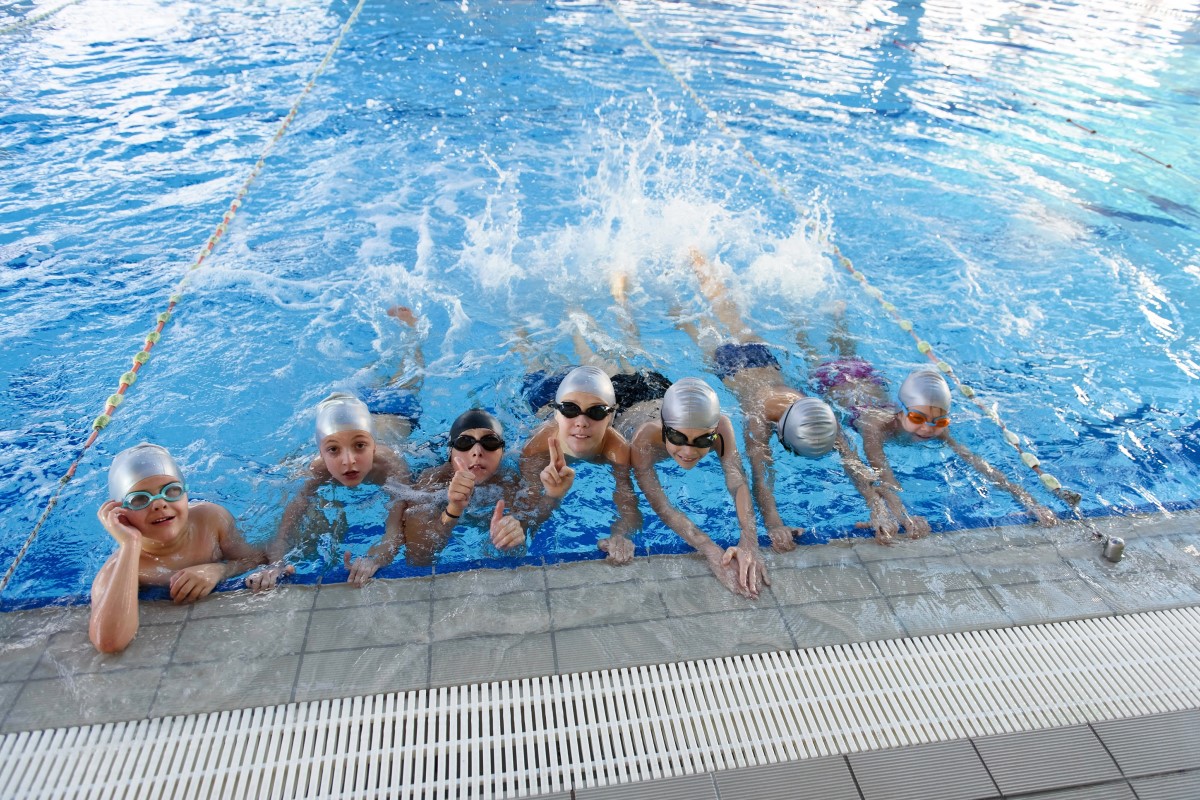
Learning to swim isn’t always the most exciting thing to do. It requires lots of discipline and willpower to learn this essential life skill. Young children thrive in environments with clear expectations. Knowing exactly what they are doing can help them get into swimming. Including water sports, swimming aids and other training tools increases the variety and fun of swimming lessons!
1) Use Combinations of Swimming Aids
Fins pull buoys and snorkels are great ways to switch up swimming lessons. Each of these helps swimmers improve their different skills. Fins let students focus on moving their arms when practicing strokes because kicking becomes easier. Pull buoys are designed to help you float and build core strength as their resistance holds you back. Snorkels are fairly self-explanatory and are good for breathing underwater. Each swimming aid is used for something different, which changes up the regular lesson routine.
2) Have a Diverse Range of Sets and Drills to Alternate Between
Young swimmers can get bored quickly. So repeating the same skills each lesson can make lessons feel monotonous. For example, swimming laps can help build endurance, but this gets old very fast. Encourage swimmers to switch things up by doing different strokes when making their way across the pool. Suggest switching from the breaststroke to the backstroke after reaching the end of the pool. Then encourage students to try out the butterfly and freestyle when they are ready.
3) Incorporate Land Drills into Practices
Exercising on land requires a similar skill set to swimming. There is a wide range of exercises that overlap with swimming. Jumping jacks and lunges are good ways to get ready to swim. These drills loosen up the muscles and prepare you to take the plunge. A few of these exercises are listed and explained in our article about the Best Dynamic Warm-Up Exercises for Swimmers. Plus hopping in the pool will feel refreshing after breaking a sweat on land!
4) Brainstorm Target Goals Together with Students
Each student should have lessons that are customized based on their skill level and needs. Giving students a sense of ownership over their swimming training makes learning something to look forward to. It also encourages students to take responsibility during practice sessions. This also helps students feel like they are working towards something. It gives their swim lessons a personal purpose.
5) Play Interactive Water Sports
Water polo and pool volleyball are a few kid-friendly examples. Both of these sports help kids get active and use their swimming skills in a fun and engaging way. The best part is these games give children an incentive to practice their skills outside of lesson time. Games like these can be played in good fun or can start a friendly competition. Whichever one you choose, just enjoy yourself and watch your child become an amazing swimmer!

